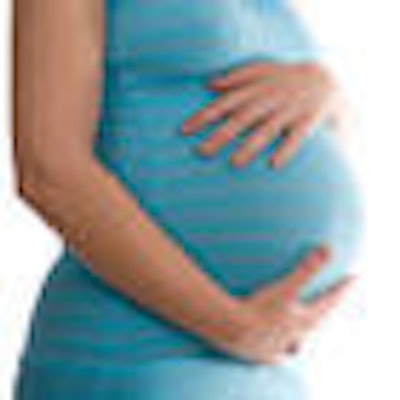
While gum disease has long been associated with possible adverse outcomes of pregnancy, the first documented case linking pregnancy-associated gingivitis with the death of an unborn child has elevated the importance of this connection (Obstetrics & Gynecology, February 2010, Vol. 115, pp. 442-445).
Lead author Yiping Han, Ph.D., an associate professor at Case Western Reserve University's School of Dental Medicine, and her colleagues have previously reported on oral bacteria causing preterm birth in animals, but this is the first human case which corroborates with those findings.
"We have demonstrated that oral bacterium causes preterm and term stillbirth in animals," she said in a DrBicuspid.com interview. "This current report is a term stillbirth. Thus, oral bacteria affect not only preterm birth, but also other adverse pregnancy outcomes such as stillbirth."
Case study
— Yiping Han, Ph.D., Case Western
Reserve University School of
Dental Medicine
Han's research lab is one of the few in the world working on understanding the role variations of the oral bacterium Fusobacterium nucleatum have on preterm labor and stillbirths. Over the years, she has been contacted by people who have questions about pregnancy loss -- stillbirth, miscarriage, etc. -- caused by these bacteria.
In this case, she was contacted by a 35-year-old woman who had recently delivered a stillborn baby at Saint John's Health Center in Santa Monica, CA, at 39 weeks and 5 days gestation (full term).
She told Han that she reported decreased fetal movement when she was first admitted and that the hospital confirmed the absence of a fetal heartbeat. After delivery, the mother consented to a complete autopsy of the fetus.
Postmortem microbial studies of the baby found the presence of F. nucleatum in the lungs and stomach. The baby had died from a septic infection and inflammation caused by bacteria.
The mother reported that she had experienced excessive gum bleeding during her pregnancy. She underwent a full-mouth periodontal examination at three weeks postpartum, which revealed minimal gingival inflammation and no signs of periodontitis. This led Han and her team to suspect that the patient may have had pregnancy-associated gingivitis.
Bacterium correlation
To investigate the possible source of the F. nucleatum infection, vaginal, introitus, and rectal swabs as well as supragingival and subgingival plaque samples were collected from the mother.
The researchers used DNA cloning technologies and found a match between the bacterium in the mother's mouth with the bacterium in the baby's infected lungs and stomach. The vaginal and rectal areas did not show the presence of F. nucleatum and were ruled out as possible sources.
Bleeding associated with the gingivitis could have allowed the bacteria -- normally contained to the mouth because of the body's defense system -- to enter the bloodstream and work its way to the placenta, the authors noted.
Even though the amniotic fluid was unavailable for testing, Han suspected (from her work with animal models) that the bacteria entered the immune-free amniotic fluid and was eventually ingested by the baby.
Normally, a mother's immune system takes care of the bacteria in the blood before it reaches the placenta. But in this case, the mother also experienced an upper respiratory infection, such as a cold, and low-grade fever just a few days before the stillbirth, which might have weakened the mother's immune system enough for the bacteria to colonize in the uterus.
"This case sheds light on patient management for those with pregnancy-associated gingivitis who also contract additional infections," the authors concluded. "Prophylactic antibiotic therapy may be considered in the presence of multiple infections to prevent prolonged bacteremia and potential hematogenous translocation of the oral bacteria into the uterus."
More research needed
Frank Scannapieco, D.M.D., Ph.D., professor and chair of the department of oral biology at the University at Buffalo's School of Dental Medicine who has published previously on this topic (Journal of Periodontology, December 2003, Vol. 8:1, pp. 70-78), agreed that the novelty of this study lies in the fact that it is the first case report in which a bacterium associated with a stillbirth was documented to have likely originated from the oral cavity.
He referenced a study (New England Journal of Medicine, November 2, 2006, Vol. 355:18, pp.1885-1894) that tested periodontal intervention to prevent adverse pregnancy outcomes and found that there were five spontaneous abortions or stillbirths in the treatment group, compared with 14 in the control group.
"Although these differences were not statistically significant, they are provocative and suggestive that periodontal disease may increase the risk for stillbirths," Dr. Scannapieco said.
He emphasized the need for further research to address the relationship, if any, between the microflora associated with periodontal disease and the risk for stillbirth.
Copyright © 2010 DrBicuspid.com



















